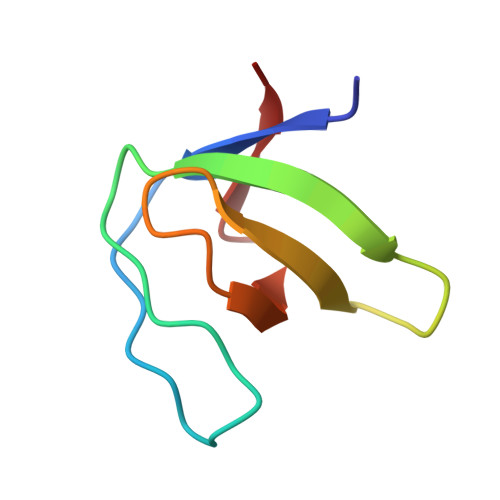The role of water molecules in the binding of class I and II peptides to the SH3 domain of the Fyn tyrosine kinase.
Camara-Artigas, A., Ortiz-Salmeron, E., Andujar-Sanchez, M., Bacarizo, J., Martin-Garcia, J.M.(2016) Acta Crystallogr F Struct Biol Commun 72: 707-712
- PubMed: 27599862
- DOI: https://doi.org/10.1107/S2053230X16012310
- Primary Citation of Related Structures:
4ZNX - PubMed Abstract:
Interactions of proline-rich motifs with SH3 domains are present in signal transduction and other important cell processes. Analysis of structural and thermodynamic data suggest a relevant role of water molecules in these protein-protein interactions. To determine whether or not the SH3 domain of the Fyn tyrosine kinase shows the same behaviour, the crystal structures of its complexes with two high-affinity synthetic peptides, VSL12 and APP12, which are class I and II peptides, respectively, have been solved. In the class I complexes two water molecules were found at the binding interface that were not present in the class II complexes. The structures suggest a role of these water molecules in facilitating conformational changes in the SH3 domain to allow the binding of the class I or II peptides. In the third binding pocket these changes modify the cation-π and salt-bridge interactions that determine the affinity of the binding. Comparison of the water molecules involved in the binding of the peptides with previous reported hydration spots suggests a different pattern for the SH3 domains of the Src tyrosine kinase family.
- Department of Chemistry and Physics, University of Almería, Agrifood Campus of International Excellence (ceiA3), Carretera de Sacramento, 04120 Almeria, Spain.
Organizational Affiliation:

















